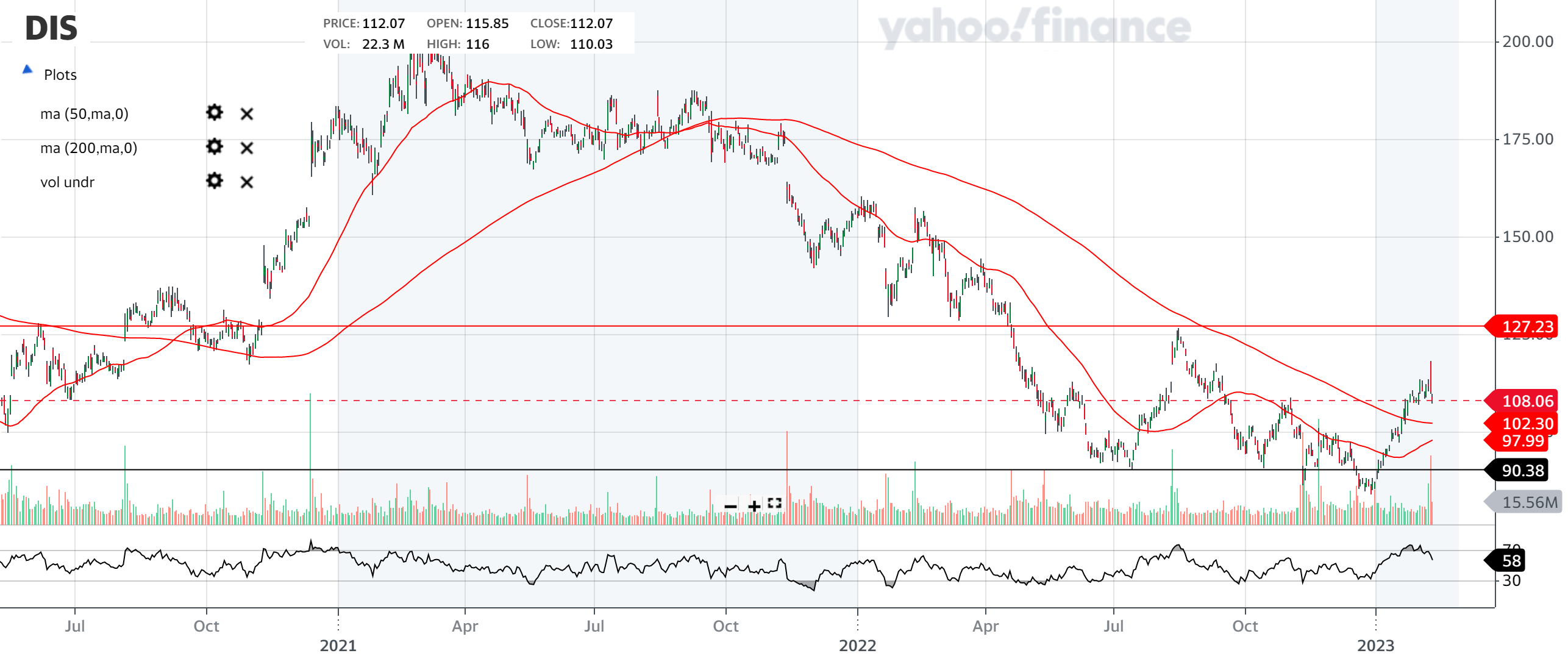Disney

Fundamental analysis
The Walt Disney Company is an American film and mass media company. It ranges from movies (Walt Disney, Pixar, Marvel, Lucasfilm, 20th Century Fox), to TV channels (ABC, ESPN, National Geographic), to online video streaming (Disney+, ESPN+, Hulu) and theme parks for children and adults. Apart from movies, the most visible part of the empire is the online service Disney+, which is trying to compete with other online giants such as Amazon, Apple TV and Netflix. Fierce competition is forcing Disney to invest massively in advertising, new movies and service development, but revenue from monthly membership fees does not (and will not for a long time) cover the cost of the service. No wonder the service is very loss-making (a loss of almost USD 5 billion for 2022). That’s why in November 2022 the company fired its CEO Bob Chapek and called the previous and very successful CEO Bob Iger out of retirement to kick-start an internal restructuring.
On the streaming front, Disney has benefited from its strong titles that are popular with audiences. These are primarily the Disney, Marvel and Star Wars brands.
Further, post-covid there are no cinema visits as in the precovid era. Film admissions are significantly lower and there is no sign of the trend reversing (in the US alone, 1 600 cinemas closed during the covid).
From 1 January 2022 to 11 February 2023, the S&P500 fell by more than 10%, but Disney fell by more than 30%. The difference is even more striking when comparing the two entities with a start date of 1/1/2020, before Covid. The S&P500 has gained roughly 20% over that period, while Disney has written off nearly 40%. Thus, it is clear that Disney has not correlated with the rise in US equities over the past two to three years. From an S&P500 perspective, Disney stock is undervalued.
Results
A few days ago, the results for Q1 of fiscal year 2023 were released (Disney is already counting Q1 of 2023 from October 1, 2022 to December 31, 2022). Revenue was up 8% to $23.512 billion. In particular, revenue from theme parks was up 27%. This can be explained by deferred consumption when people could not visit Disney theme parks during Covid. An even bigger increase in park attendance is expected for this year. The company will not pay dividends again. The last time it paid a dividend was in 2020, it is not currently a dividend stock.
Technical analysis
The price has bounced off strong resistance at $90 several times in a row. The long-term moving averages are very close together on the D1 chart signaling a buying trend. This would put an end to the downtrend that has been in place since October 2021.
The RSI is in the neutral zone.
The reaction to the results released was dismal, with the stock writing off more than 4%.
Conclusion
The absence of a dividend makes Disney stock more of a speculative buy than a long-term dividend earner. The stock appears to be undervalued due to its behavior relative to the S&P 500. Further, a buy signal in the form of a crossing of the moving averages is imminent. However, the long-term sell-off had its rational economic basis primarily in the loss-making streaming division of Disney+. New management since November